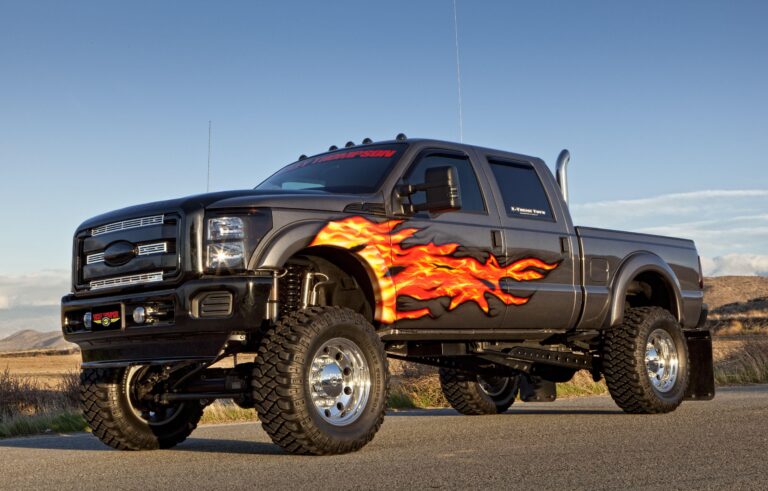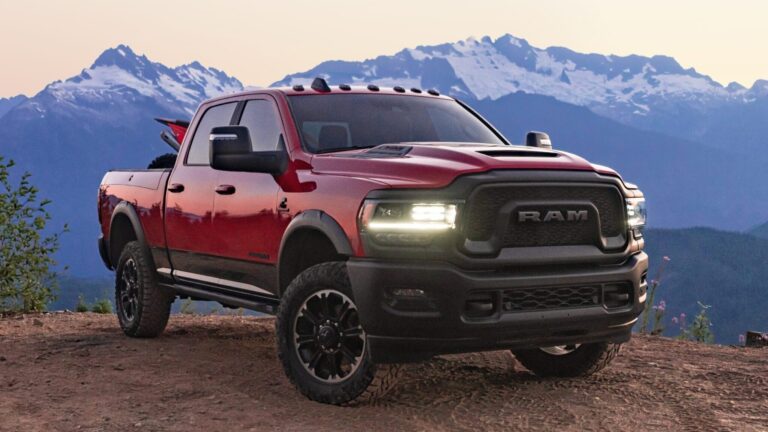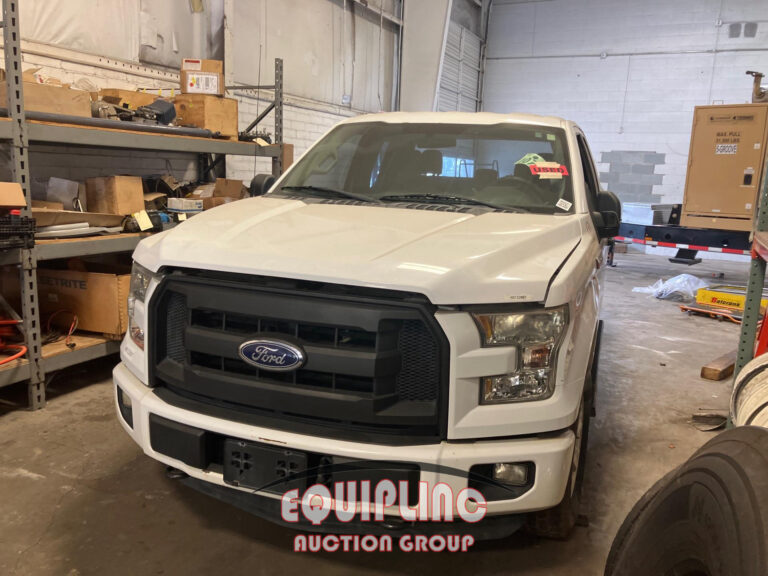White Work Truck: The Unsung Hero of American Business
White Work Truck: The Unsung Hero of American Business cars.truckstrend.com
In the vast panorama of commercial vehicles, few sights are as ubiquitous, as instantly recognizable, and as fundamentally practical as the white work truck. More than just a color choice, the "White Work Truck" represents a cornerstone of countless industries, a symbol of reliability, efficiency, and the tireless spirit of entrepreneurship. From the bustling city streets to remote construction sites, from the local plumber’s trusted companion to the fleet manager’s preferred asset, the white work truck is the unsung hero, the dependable workhorse that keeps the gears of commerce turning. This comprehensive guide delves into the enduring appeal, diverse applications, practical considerations, and economic advantages of this essential vehicle.
The Enduring Appeal and Practicality of White
White Work Truck: The Unsung Hero of American Business
Why white? The prevalence of white work trucks is no accident; it’s a testament to a confluence of practical and economic benefits that make it the ideal choice for demanding commercial environments.
- Heat Reflection: White is the most reflective color, significantly reducing heat absorption. This is crucial for vehicles often parked under direct sunlight, helping to keep the cabin cooler for occupants and protecting temperature-sensitive cargo or tools stored in the bed or cargo area. In an era of increasing climate awareness, this efficiency translates to less reliance on air conditioning, potentially saving fuel and reducing emissions.
- Visibility and Safety: While perhaps not as stark as high-visibility yellow or orange, white offers excellent contrast against most backgrounds, making the truck easily visible on roads and job sites, enhancing safety for drivers and pedestrians alike.
- Cost-Effectiveness: Historically, white has been the standard, non-premium color option offered by most manufacturers, making it the least expensive choice for fleet purchases. When buying dozens or hundreds of vehicles, these savings accumulate significantly.
- Ease of Maintenance and Appearance: Counterintuitively, white can be quite forgiving. While it shows mud and heavy grime, minor scratches, dust, and light dirt often blend in better than on darker colors. This means less time spent on meticulous cleaning to maintain a professional appearance, which is vital for businesses whose trucks are their mobile billboards.
- Branding Canvas: A crisp white truck provides the perfect blank canvas for company logos, contact information, and branding graphics. Vinyl wraps and decals stand out vividly against the white background, ensuring maximum visibility for advertising and professional presentation. This makes the truck not just a tool, but a highly effective marketing asset.
- Resale Value: White work trucks tend to hold their value well in the used market, particularly for fleet sales. Their neutral color appeals to a broader range of buyers, from small businesses looking for an affordable entry into the market to larger companies expanding their operations.

Diverse Types and Configurations of White Work Trucks
The term "white work truck" encompasses a vast array of vehicles, each designed for specific tasks and industries. Their versatility is one of their greatest strengths.
- Light-Duty Pickups (e.g., Ford F-150, Chevy Silverado 1500, Ram 1500): These are the most common and versatile, serving a wide range of professionals from general contractors and landscapers to delivery services. Often equipped with basic bed liners, toolboxes, or ladder racks, they balance daily drivability with respectable payload and towing capacities.
- Medium-Duty Pickups (e.g., Ford F-250/350, Chevy Silverado/GMC Sierra 2500/3500, Ram 2500/3500): Stepping up in capability, these trucks offer higher towing and payload capacities, making them ideal for heavy equipment hauling, larger crews, or more specialized upfits. They are popular among plumbers, electricians, HVAC technicians, and construction workers.
- Heavy-Duty Chassis Cabs (e.g., Ford F-450/550, Chevy Silverado/GMC Sierra 4500/5500, Ram 4500/5500): These are essentially truck frames designed to accept a variety of custom bodies. Often seen as white chassis cabs, they are transformed into dump trucks, stake bed trucks, large service body vehicles, wrecker trucks, or even fire apparatus. They are the backbone of serious construction, utility, and municipal operations.
- Commercial Vans (e.g., Ford Transit, Mercedes-Benz Sprinter, Ram ProMaster, Chevy Express): While not traditional "trucks" in the pickup sense, white cargo vans are quintessential work vehicles. Their enclosed cargo areas are perfect for secure tool storage, mobile workshops, or package delivery. They are favored by electricians, plumbers, couriers, and caterers for their weather protection and customizable interiors.
- Specialized Vehicles: Many other specialized white work vehicles exist, including box trucks for moving and delivery, flatbed trucks for material transport, and even smaller utility vehicles for campus maintenance or security.


Essential Features and Upfits
What truly defines a work truck isn’t just its base chassis, but the specialized equipment and modifications—known as upfits—that tailor it to specific tasks.
- Service Bodies: These replace the standard pickup bed with lockable compartments, providing secure and organized storage for tools, parts, and equipment. They are a staple for mobile service technicians.
- Ladder Racks: Essential for trades that carry long materials like ladders, pipes, or lumber. Available in various designs, including over-cab, side-mount, or utility racks.
- Toolboxes: From crossover boxes that sit behind the cab to side-mounted boxes and under-body storage, toolboxes keep essential items secure and accessible.
- Flatbeds/Stake Beds: Ideal for hauling oversized or irregularly shaped materials, these allow for easy loading and unloading from any side.
- Dump Bodies: For construction, landscaping, or waste management, a hydraulic dump bed allows for efficient material unloading.
- Interior Organization: For vans and enclosed service bodies, shelving, drawers, bins, and custom partitions create an efficient mobile workspace.
- Plow Mounts: For businesses operating in snowy climates, the ability to attach a snowplow turns a work truck into a winter income generator.
- Liftgates: For delivery or material handling, a hydraulic liftgate simplifies loading and unloading heavy items.
- Safety Lighting: Beacons, strobe lights, and reflective tape enhance visibility, especially on job sites or during roadside operations.
Benefits of Owning and Operating a White Work Truck
Beyond their specific features, white work trucks offer overarching benefits that contribute directly to business success:
- Increased Productivity: Properly equipped, a work truck minimizes wasted time searching for tools, making multiple trips, or struggling with difficult loads.
- Professional Image: A clean, well-maintained white work truck with clear branding projects professionalism and reliability to clients.
- Versatility: One truck can often be adapted for multiple tasks, maximizing its utility and return on investment.
- Durability and Longevity: Built to withstand demanding use, work trucks are designed for long service lives, providing years of reliable operation.
- Tax Advantages: In many regions, commercial vehicle purchases and operating expenses offer significant tax deductions for businesses.
Choosing the Right White Work Truck: Practical Advice
Selecting the ideal white work truck requires careful consideration of your specific business needs.
- Define Your Needs:
- Payload and Towing Capacity: How much weight do you need to carry or tow regularly? Don’t just consider the heaviest load; think about average daily use.
- Cargo Volume and Security: Do you need an enclosed space (van, service body) or an open bed? How critical is tool security?
- Terrain: Will you primarily be on paved roads, or do you need 4×4 capability for off-road job sites?
- Specific Tools/Equipment: List every major tool or piece of equipment that needs to be carried. This dictates storage needs.
- Budget and Ownership Costs:
- New vs. Used: New offers warranty and the latest tech; used can save significantly on initial outlay.
- Fuel Type: Gasoline is common, diesel offers better towing and fuel economy for heavy loads but higher upfront cost. Electric options are emerging for specific applications.
- Maintenance: Consider the cost of parts, labor, and specialized service for the chosen model.
- Upfit Planning: Factor in the cost and time for necessary upfits. It’s often more efficient to have these installed before the truck enters service.
- Dealer Support and Service Network: Ensure there’s a reliable dealership nearby for parts and service, minimizing downtime.
Maintenance and Care for Your White Work Truck
To ensure your white work truck remains a reliable asset, consistent maintenance is key:
- Adhere to Service Schedules: Follow manufacturer recommendations for oil changes, fluid checks, tire rotations, and filter replacements.
- Regular Inspections: Periodically check brakes, lights, tires, and all fluid levels. Pay attention to any unusual noises or vibrations.
- Body Care: While white is forgiving, regular washing helps prevent grime buildup and protect the paint. Address any chips or scratches promptly to prevent rust, especially in areas prone to road salt.
- Underbody Protection: Consider undercoating, especially if operating in corrosive environments, to prevent rust on the chassis.
- Upfit Maintenance: Don’t forget to inspect and maintain any specialized equipment (e.g., lubricate liftgate mechanisms, check ladder rack fasteners).
- Interior Cleanliness: A clean cab contributes to driver comfort and a professional image.
Challenges and Solutions
Even the most reliable work truck can present challenges, but proactive solutions exist:
- Fuel Costs: Implement efficient driving practices, plan routes strategically, and consider alternative fuel vehicles if feasible.
- Wear and Tear: Proactive, preventative maintenance is the best defense against unexpected breakdowns and costly repairs.
- Tool/Equipment Theft: Invest in high-quality, lockable storage solutions (service bodies, secure toolboxes) and consider GPS tracking for valuable assets.
- Downtime: Establish a relationship with a reliable service center and consider having a backup vehicle for critical operations if your business depends heavily on its trucks.
- Customization Complexity: Work with reputable upfitters who understand your specific industry needs to ensure proper installation and safety compliance.
Concluding Summary
The white work truck is far more than just a vehicle with a particular paint job; it is an indispensable tool, a mobile office, and a powerful statement of a business’s commitment to service and efficiency. Its popularity stems from a perfect blend of practicality, cost-effectiveness, and adaptability. From the fundamental benefits of its color to the endless possibilities of its configurations, the white work truck stands as a testament to hard work and smart business decisions. For any enterprise that relies on mobility and utility, investing in and properly maintaining a white work truck isn’t just an expense; it’s an investment in the backbone of their operations, a partner that reliably delivers results, day in and day out.
White Work Truck: Representative Pricing Guide (Estimated)
Please note: Prices are highly variable based on manufacturer, model year, trim level, engine choice, optional features, condition (for used vehicles), regional market demand, and the specific upfitter chosen. This table provides a general range for common white work truck configurations.
| Category | Description | New Price Range (MSRP) | Used Price Range (3-5 years old) | Typical Upfit Costs (Estimated) | Key Applications |
|---|---|---|---|---|---|
| Light-Duty Pickup | Base models (e.g., F-150 XL, Silverado 1500 WT, Ram 1500 Tradesman) | $35,000 – $55,000 | $20,000 – $40,000 | Toolboxes ($500-$2,000), Ladder Rack ($300-$1,500) | General contractors, landscapers, small businesses, light delivery |
| Medium-Duty Pickup | Base models (e.g., F-250 XL, Silverado 2500 WT, Ram 2500 Tradesman) | $45,000 – $70,000+ | $30,000 – $55,000 | Service Body ($5,000-$15,000+), Plow Mount ($2,000-$6,000) | Plumbers, Electricians, HVAC, Construction, Heavy Landscaping |
| Heavy-Duty Chassis Cab | Base chassis cab (e.g., F-450/550, Silverado 4500/5500, Ram 4500/5500) | $55,000 – $80,000+ | $40,000 – $65,000 (Chassis Only) | Dump Body ($10,000-$30,000+), Large Service Body ($15,000-$30,000+) | Utility companies, heavy construction, municipalities, specialized services |
| Commercial Cargo Van | Base cargo models (e.g., Ford Transit, Sprinter, ProMaster, Express) | $38,000 – $60,000 | $25,000 – $45,000 | Interior Shelving/Bins ($1,000-$5,000+), Ladder Racks ($500-$2,500) | Delivery, mobile workshops, electricians, plumbers, HVAC, couriers |
| Specialized (e.g., Box Truck) | Chassis cab with standard box body (10-16 ft) | $60,000 – $100,000+ | $35,000 – $70,000 | Liftgate ($3,000-$8,000), Ramp ($500-$2,000) | Moving services, general delivery, catering, mobile retail |
Disclaimer: These are rough estimates and should only be used as a preliminary guide. Always consult with dealerships and upfitters for accurate, current pricing based on your specific needs and location.
Frequently Asked Questions (FAQ) about White Work Trucks
Q1: Why are so many work trucks white?
A1: White is chosen for several practical reasons: it reflects sunlight, keeping the interior cooler; it’s often the standard, lowest-cost paint option; it provides an excellent neutral background for company branding and logos; and it can be surprisingly forgiving for minor scratches and dirt compared to darker colors.
Q2: Is white paint harder to maintain on a work truck?
A2: Not necessarily. While mud and heavy grime are visible, white tends to hide dust, light dirt, and minor imperfections better than black or dark colors. It also doesn’t show swirl marks from washing as prominently. Regular cleaning is still important for professional appearance and paint longevity.
Q3: Do white work trucks have good resale value?
A3: Generally, yes. White is a universally accepted and practical color, especially for commercial use. This broad appeal, combined with the inherent demand for reliable work vehicles, often leads to strong resale values, particularly for well-maintained fleet vehicles.
Q4: What’s the best white work truck for a small business?
A4: The "best" truck depends entirely on your specific business needs. Consider your daily payload and towing requirements, the amount of cargo space needed, the type of terrain you’ll encounter, and your budget. A light-duty pickup might be perfect for a landscaper, while a cargo van suits a mobile dog groomer, and a medium-duty pickup with a service body is ideal for an electrician.
Q5: Should I buy a new or used white work truck?
A5: Buying new offers a full warranty, the latest technology, and customization options. Buying used can provide significant cost savings, making it a good option if budget is a primary concern. However, used trucks may come with higher mileage, less advanced features, and potentially more immediate maintenance needs. Weigh the initial cost savings against potential long-term expenses and your comfort level with a pre-owned vehicle.
Q6: How can I customize my white work truck for my specific trade?
A6: Customization, or "upfitting," is key. This includes installing service bodies with specialized compartments, ladder racks, interior shelving and bins for vans, toolboxes, liftgates, snowplow mounts, and safety lighting. Many dealerships work with professional upfitters to tailor the truck to your exact specifications.
Q7: Are electric white work trucks becoming common?
A7: Electric work trucks are an emerging segment, with manufacturers like Ford (F-150 Lightning Pro), GM (BrightDrop), and Rivian offering options. While not as common as gasoline or diesel versions yet, their popularity is growing, especially for businesses with fixed routes, lower daily mileage, and access to charging infrastructure, due to lower operating costs and environmental benefits.






